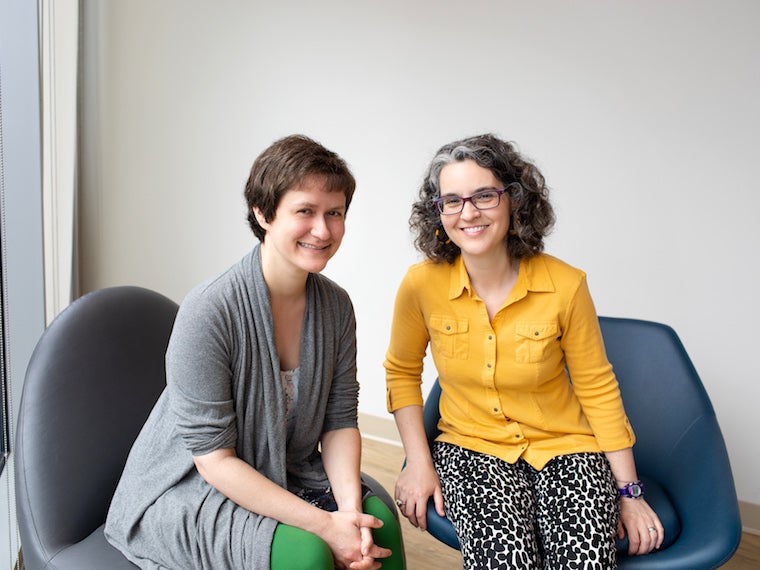Oberlin Center for Convergence (StudiOC)
Reimagining Maker Culture(s): from Fabrication to Curation
In this learning community, we investigate, in an explicitly liberal arts context, the connected themes of “maker culture” and indigenous material culture, making and keeping, past and present.

Reimagining Maker Culture (s): from Fabrication to Curation
Offered fall 2019
The Reimagining Maker Culture(s): from Fabrication to Curation examines contemporary and historical making (creating/crafting) and keeping (curating/stewarding) practices in an effort to define and imagine inclusive, just, and sustainable models for making and keeping in an age of rapid cultural and environmental change. What practical and ethical lessons can we learn from contemporary movements to make things anew, and to regain the wisdom of objects crafted in the past?
Today is a particularly significant moment in the history of physical media. Shared knowledge (online tutorials) and resources (community makerspaces) make it easier than ever for anyone to learn to design and fabricate their own inventions or to reclaim knowledge about traditional crafts. And while industrially derived fabrication tools are becoming more powerful, less costly, and increasingly easy to use, climate change is quickly altering the distribution and availability of many of the raw materials that indigenous communities, especially those from arctic regions, once relied on to craft tools for their economic and cultural survival.
While maker spaces have become increasingly common at large research universities, maker culture at liberal arts institutions is still in its infancy.
This learning community provides space to imagine what maker culture might look like if it were driven by a liberal arts ethos. With our emphasis on inclusion, social justice, sustainability, and interdisciplinary collaborations, liberal arts institutions have much to offer and much to gain from intentionally engaging with and growing maker culture on campus.
As we make, we accumulate objects and artifacts. Deciding what to keep and how becomes an ethical quandary from both cultural and environmental perspectives. This same liberal arts ethos will inform our study of current practices for curating made things, and in particular indigenous material culture.
Collecting for museums has deep colonial roots, yet collections are also reservoirs of knowledge about past social, spiritual and economic practices that can be re-claimed by studying, first-hand, the tools, clothing, and ritual objects stored on museum shelves. Recent trends in cocuration and digital curation are opening new ways for both indigenous community members and Oberlin students to learn from ancestral things.
For instance, all students will engage with Rosemary Ahtuangaruak, who we plan to bring to campus toward the beginning of the semester to continue her consultation work on Oberlin’s collection of indigenous artifacts from Alaska.
Ahtuangaruak first consulted for us in spring 2017, an extraordinary visit that spurred a number of ongoing student research projects. Students in fall 2019 will help record, transcribe, and disseminate information gained from her second consultation. The experience will be the launching point for student exploration of the (often simultaneous) social, aesthetic, and scientific values which ethnographic and archaeological collections may embody in the current day.
Similarly, all students will attend portions of the Crafting Sound Symposiumin in which we turn a critical eye toward the technologies of sound and examine unspoken and unquestioned value systems inherent in these technologies.
We will come together as a learning community to explore hands-on, lo-fi, DIY alternatives to traditional technologies, and consider how these alternatives might engage new audiences in creative sound-making practices.
TECH 361 and ANTH 211 are both required for enrollment in this learning community.
Instructors
Course instructors for this learning community are TIMARA Technical Director and Lecturer Abby Aresty, and Associate Professor of Anthropology Amy Margaris.
Abby Aresty, instructor
TECH 361 Making a Sustainable, Inclusive, and Just Future: The new Industrial Revolution
Meets 7 pm, Monday; 4 credit hours; enrollment limit 20
The maker revolution has been described as the “New Industrial Revolution.” Despite benefits, the first Industrial Revolution contributed to increased economic disparity, social injustices, and widespread environmental degradation.
In this course, we ask: Can we really afford a new Industrial Revolution? Students will critique the maker movement, considering what communities have been excluded, and exploring whether we can make solutions to poverty and sustainability. Students will develop resources to grow a sustainable and inclusive maker culture throughout the conservatory and college. In so doing, they will provide a model for a future of ethically driven making across industry and education.
Amy Margaris, instructor
ANTH 211 Learning with Indigenous Material Culture
Meets 2:30 pm, Monday, Wednesday, Friday; 4 credit hours; enrollment 20
Oberlin College is home to a small but important collection of 19th century cultural objects made by indigenous peoples across Arctic North America. The collection was originally obtained by Smithsonian naturalists, but today provides an avenue for both indigenous knowledge repatriation and object-centered learning within a liberal arts context.
This course combines hands-on study of the Arctic Collection with consultation with an indigenous knowledge bearer. Themes to be explored along the way include cocuration, indigenous “maker movements” and knowledge repatriation, physical repatriation and the law, and digital approaches to democratizing access to physical collections.